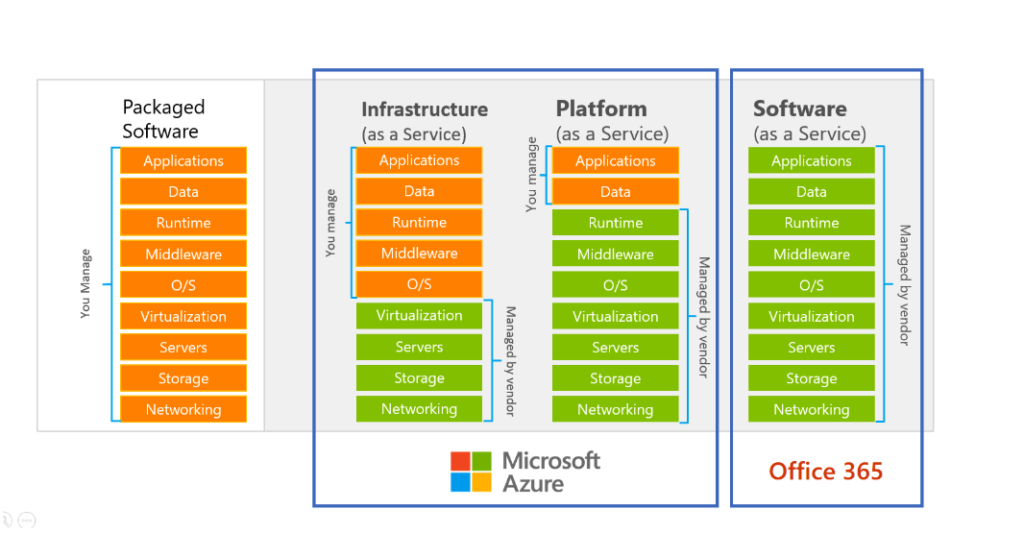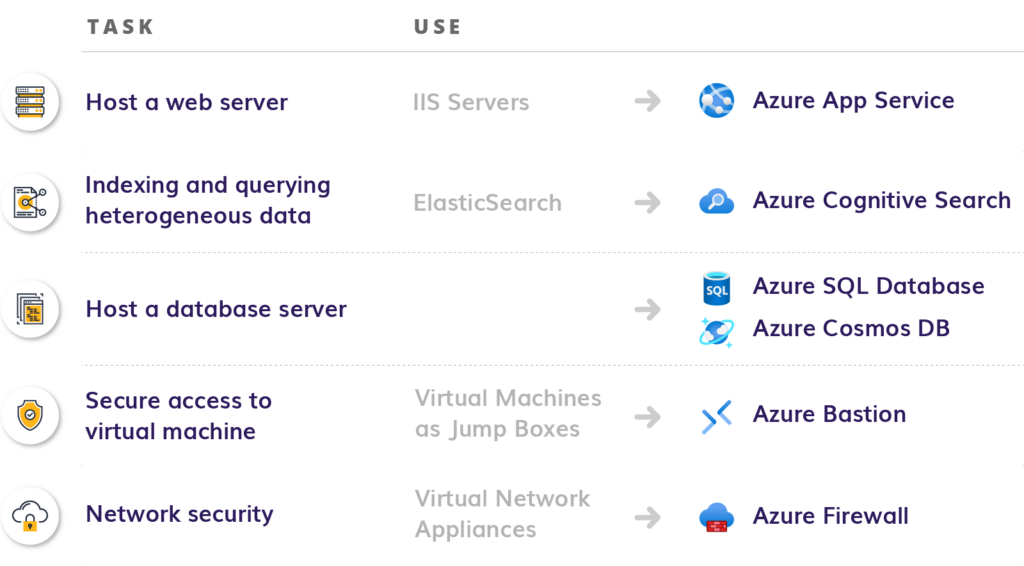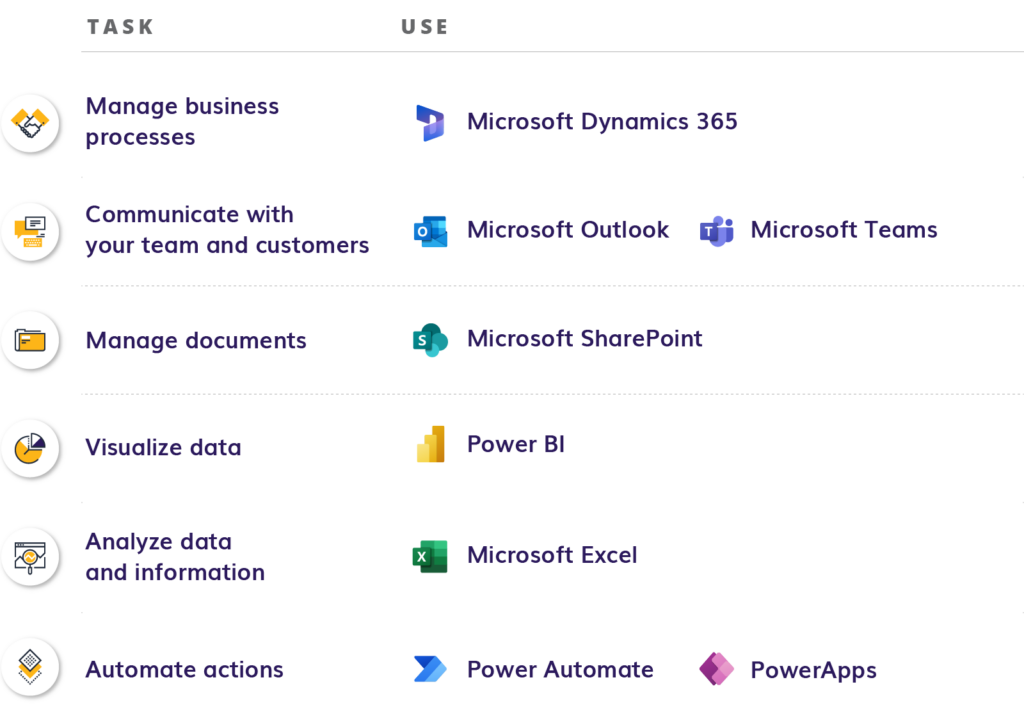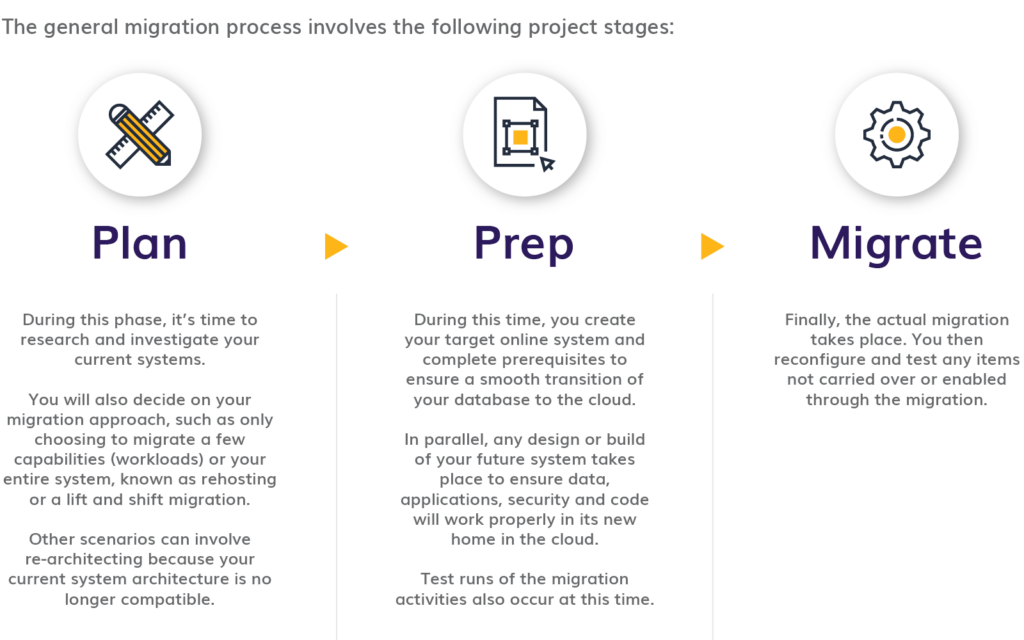Get to know the cloud and why it makes sense for your business to migrate to the cloud with Microsoft.
Most people have heard of the cloud and have some level of understanding about the capabilities it provides, but you may still be unsure of what exactly the cloud is and does for your business.
If you’re still struggling to figure out the benefits of migrating to the cloud, this blog is for you. We will provide a brief overview of the cloud, the benefits of using Microsoft when migrating online, and a quick overview of the migration process so you can have a high-level understanding of what to expect and how to prepare to make the move. For users looking to transition from D365 On-Prem to Online, we’ll also share a summary of features you can expect with D365 Online (cloud).
What is the Cloud, and Why Should I Migrate My Business There?
The “cloud” is a term used to reference computing services available over the internet as opposed to an on-premises server. Computing services are what allow you to run software, store documents and data, access applications and more. You might be surprised to learn the concept of the cloud is the same as your in-house network – the internet is pretty much the same, but at a much, much larger scale that can connect, store and reference information across servers in data centers around the globe.
Cloud services fall within the following three categories: SaaS (Software as a Service), PaaS (Platform as a Service), and IaaS (Infrastructure as a Service). These are different deployment categories with varying levels of responsibility from the customer and provider.
If you are currently using Microsoft Dynamics 365 CE on-premises, the graph below outlines your deployment method on the left-hand side. You currently run and manage all aspects of your systems, including hardware, software and maintenance to any of these components.
As you’ll discover, aside from the flexibility of the cloud, your level of responsibility in managing and maintaining your system components drastically shifts when you migrate online – allowing you to focus your resources and time on your core business.

https://docs.microsoft.com/en-us/azure/guides/operations/azure-operations-guide#cloud-computing-model
There are several cloud providers that offer a variety of these computing services, some focusing more on certain areas than others. A few providers include Microsoft Azure, AWS, Google Cloud, Alibaba Cloud, Rackspace and Liquid Web.
Microsoft is a leader in several of the cloud service domains, especially when it comes to integration with other tools and security and compliance.
The Microsoft Azure Cloud services product offering comprises over 200 products across the three categories mentioned previously. Here are just a few examples:
PaaS
IaaS
SaaS
Why is Accessing Computing Services Over the Internet Such a Big Deal?
As technology evolves and new capabilities emerge within software, we can leverage the countless available tools to bring our businesses to the next level. Of course, these new tools and technologies are rooted in very complex software that requires large amounts of storage, data processing and computing power. If you enjoy using several tools, you can imagine how overwhelming this may become for a single computer.
Leveraging an on-premises server network might help, but what if your next product rockets your business and suddenly introduces more data, more tools and more users to your company? This becomes a continuous effort to keep up and deploy new infrastructure and programs to support your company.
The cloud allows you to extend the computing power of your machine via the internet – allowing you the flexibility to choose how much computing power you want to use with no major effort. It’s quite literally a few clicks. This means easy storage expansion and easy adoption of new tools and technologies to keep up with your competition. On the flip side, this also means only purchasing what you need due to the business model of cloud products by licensing and purchasing capacity versus a one-size fits all software package.
There are many more complexities to the cloud that are beyond the scope of this blog, but with this background, you can hopefully now appreciate why the cloud is such a powerful concept – economies of scale (and computing power).
For example, I imagine all the apps you use on your phone (Facebook, Google Docs, Uber Eats) – this is the same concept. These apps are all accessible to you because the internet stores the data and software you use here. Through the cloud, you can use and access these apps anytime you like by clicking the app square on your home screen.
Remember when you ran out of storage because of too many pictures or too much music on your phone? This is no longer a problem because of tools like OneDrive and Spotify that no longer require you to have this information on your actual device. Thank you, cloud.
Benefits of Migrating to the Cloud with Microsoft
It takes a lot to keep your systems up and running, and as we’ve already covered, that’s a big appeal of the cloud. With respect to general business solutions, a company’s focus for cloud services is typically on infrastructure (IaaS) and software (SaaS).
Here are a few reasons why migrating to the cloud using Microsoft and taking advantage of their services may be the right move for you.
Often cloud providers have been vetted and gone through rigorous reviews to ensure their services and security strategy meet the highest standard. Microsoft has made a $1 billion dollar security investment which includes physical data centers, network connectivity, disaster recovery and providing over 100 offerings for compliance coverage – the most comprehensive of any cloud provider.
It can be really frustrating to run into compatibility issues or find out a feature you love is either no longer supported or not available to you due to infrastructure constraints. Part of being in the cloud is enjoying the updates and upgrades – you’ll always have access to the latest enhancements, fixes and features. Microsoft is constantly innovating its products and shares release plans twice a year.
In the past, IT meant hardware, software and everything in between, but with so many resources and technologies available, it can be hard to keep up. The cloud allows your team to focus more on the systems and technology that are critical for your business instead of hardware maintenance.
For the quickest way to start taking advantage of the cloud, a “lift and shift” migration may be the move for you. This requires taking all your existing systems as they are and moving them to the cloud leveraging the IaaS (Infrastructure as a Service) service offering.
The Microsoft FastTrack program makes this process a breeze. This program is run by a Microsoft product engineering team that offers best practices, tools, resources and support during the process of moving to the cloud.
It’s only available to eligible customers. To find out if you’re eligible, click here.
The cloud allows for flexibility – you can pick and choose how much storage, power and which applications make the most sense for you.
Software as a Service (SaaS) allows you to focus on what you do best instead of reinventing the wheel to create custom software that is difficult to maintain and won’t fit your future architecture. Several business applications are ready to use with standard out-of-the-box (OOB) features you can easily tailor to fit your needs.
Microsoft offers cloud services as a subscription allowing you to pay a monthly fee to pick and choose which products and services to use as opposed to on-premises which requires a hefty investment in hardware and software as well as time to implement.
Being bound to a network makes accessing information to do your job challenging. Leveraging the cloud allows you to access your tools and systems from anywhere, at any time, on various devices through the internet.
Something to keep in mind: While new features are certainly exciting, Microsoft focusing on building their cloud product offerings often means newly released features are typically exclusive to online versions. These features are also not often made available to their on-premises counterparts. Additionally, they eventually no longer support or deprecate any legacy features, which can result in outdated, highly issue-prone on-premises systems.
Migrating to the Cloud Process Overview
The general migration process involves the following project stages:
Teaming up with a third-party partner can be very helpful when deciding on the best approach, prepping your future system and getting things back up and running in your new system after the migration. With respect to business applications, this partner can assist not only in guiding you through the process but also walk you through the following activities you need to complete post migration:
- Reconfiguring any customizations such as JavaScript, custom code and workflows
- Updating your integrations to connect with your new online instance
- Updating existing reports to ensure the online version supports the database query method – often, this requires using Fetch XML versus any SQL queries.
Feature Differences between Microsoft Dynamics On-Premise and Online
One of the most exciting things about bringing your business to the cloud is benefitting from the enhancements and feature releases Microsoft constantly pushes to the Dynamics 365 (SaaS) platform business applications.
Unlike an on-premise deployment, upgrades to your business applications are easy to manage, so you always have access to the latest features and functionality – D365 CE Online truly embodies dynamic software.
Here are some of our favorite features you can expect to find with D365 CE Online.
- Major interface updates
- Several OOB connectors that allow quick integration with the applications you love
- AI features such as Viva Sales, Viva Insights, Assistant, Suggestions (Cross-Sell) and Relationship Health Analytics
- Global search
- Teams integration to chat within the platform
- Integration with Excel online
- Integration with Power BI
- Integration with Teams
- Integration with Outlook and Dynamics 365 App for Outlook
- Integration with SharePoint
- Web portal
- Voice of the Customer
- Microsoft Power Automate and PowerApps integrations
- OOB file and image fields to easily associate media with records
- Customer insights
- Connected field service
Conclusion
Tools and technology are meant to make your job easier. Moving to the cloud means a lot less work for you regarding the tools you use, allowing your team to focus on more productive tasks instead of managing the tools meant to assist you. Microsoft’s migration processes and cloud offerings make this a breeze.











